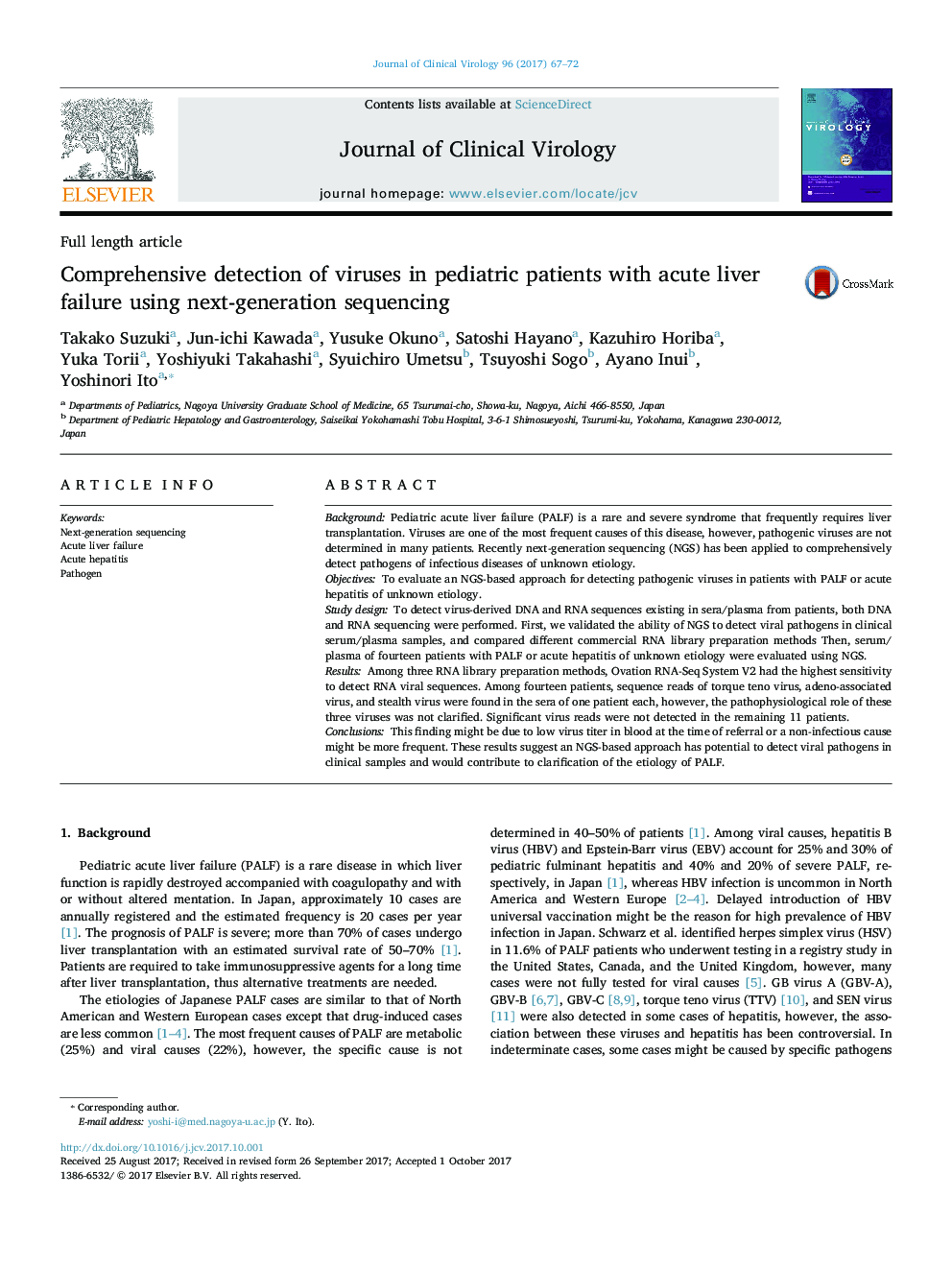| کد مقاله | کد نشریه | سال انتشار | مقاله انگلیسی | نسخه تمام متن |
|---|---|---|---|---|
| 5667972 | 1592330 | 2017 | 6 صفحه PDF | دانلود رایگان |
- Pediatric acute liver failure (PALF) is a rare and severe syndrome.
- Pathogenic viruses are not determined in many patients with PALF.
- Viruses were found in 3 of 14 patients with PALF using next-generation sequencing.
- NGS-based approach has potential to detect viral pathogens in clinical samples.
BackgroundPediatric acute liver failure (PALF) is a rare and severe syndrome that frequently requires liver transplantation. Viruses are one of the most frequent causes of this disease, however, pathogenic viruses are not determined in many patients. Recently next-generation sequencing (NGS) has been applied to comprehensively detect pathogens of infectious diseases of unknown etiology.ObjectivesTo evaluate an NGS-based approach for detecting pathogenic viruses in patients with PALF or acute hepatitis of unknown etiology.Study designTo detect virus-derived DNA and RNA sequences existing in sera/plasma from patients, both DNA and RNA sequencing were performed. First, we validated the ability of NGS to detect viral pathogens in clinical serum/plasma samples, and compared different commercial RNA library preparation methods Then, serum/plasma of fourteen patients with PALF or acute hepatitis of unknown etiology were evaluated using NGS.ResultsAmong three RNA library preparation methods, Ovation RNA-Seq System V2 had the highest sensitivity to detect RNA viral sequences. Among fourteen patients, sequence reads of torque teno virus, adeno-associated virus, and stealth virus were found in the sera of one patient each, however, the pathophysiological role of these three viruses was not clarified. Significant virus reads were not detected in the remaining 11 patients.ConclusionsThis finding might be due to low virus titer in blood at the time of referral or a non-infectious cause might be more frequent. These results suggest an NGS-based approach has potential to detect viral pathogens in clinical samples and would contribute to clarification of the etiology of PALF.
Journal: Journal of Clinical Virology - Volume 96, November 2017, Pages 67-72
